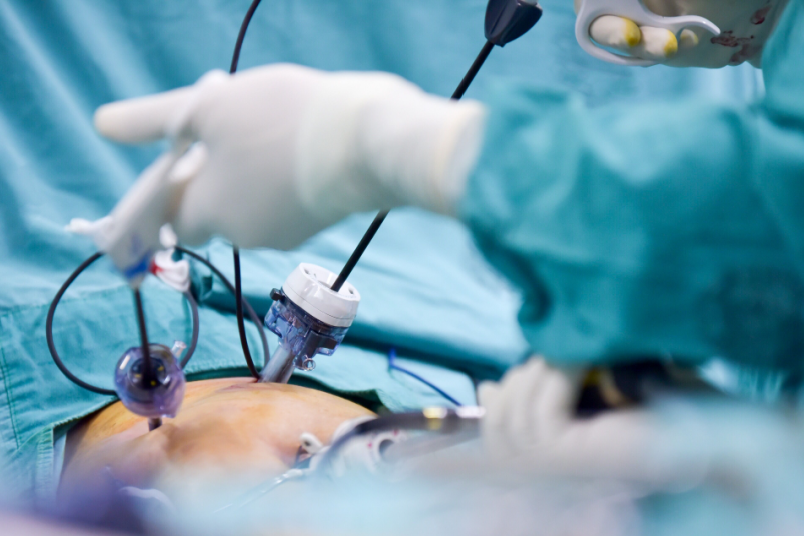Infertility is defined as the inability to conceive despite having one year of unprotected, regular intercourse. Women may face infertility issues due to various reasons, including ovulation disorders, tubal infections, cervical and uterine complications, and endometriosis. In males, it is predominantly due to decreased sperm count or motility. With timely diagnosis and treatment, there is hope for couples who have infertility issues to still conceive.
Causes of Female Infertility
1. Ovulation disorder: Certain ovulation disorders such as premature ovarian failure (ovaries stop working at age 40), polycystic ovary syndrome (PCOS), and thyroid disorders (underactive or overactive thyroid gland) inhibit the release of egg in some women while in others, ovulation may not occur in every cycle, lowering the chances of conception.
2. Endometriosis: A medical condition in which the inner lining (tissue) of the womb starts growing in other parts (e.g. ovaries/ abdomen wall), causing damage.
3. Scarring due to surgery: Sometimes, the uterus and fallopian tubes can get damaged and scarred after pelvic or cervical surgery.
4. Fibroids: These are non-cancerous growths that prevent the attachment of the fertilized egg in the womb by altering the structure and blood flow in the uterus.
5. Pelvic inflammatory disease (PID): This is a bacterial infection of the upper genital tract in females that can damage and scar the fallopian tubes.
Cause of Male Infertility

Male factor infertility is the leading cause of infertility in males. Men with male factor suffer from:
- Low sperm count
- Low sperm motility
- Obstruction in the tubes which transit the sperms to the outside
- Testicle disorders arising due to infection, cancer, or surgery
- Ejaculation disorders that restrict semen release
Diagnosis of Female Infertility

The normal process of fertilization involves the release of healthy eggs from the ovaries, which pass into the fallopian tubes to fertilize with the sperm. The fertilized egg must then travel and attach itself to the uterus (implantation). Diagnosis of female infertility includes trying to find out problems in any of these steps of fertilization.
One prominent method of infertility testing in women is called laparoscopy. Laparoscopy has become an integral part of gynecologic surgery as it helps in the diagnosis and treatment of various abdominal and pelvic disorders of the female reproductive system. In this procedure, a small incision is made around the navel, through which a thin, viewing device is inserted to examine the fallopian tubes, ovaries, and uterus. This procedure is helpful in ruling out endometriosis, scarring, blockages, or other problems with the fallopian tubes. It may also be useful in detecting issues with the ovaries and uterus. With the help of laparoscopy, certain infertility conditions can also be treated. For instance, it can remove growths called fibroids or endometriosis tissue.
5 Ways Laparoscopic Surgery is Useful in Infertility

1. Easy identification of abnormalities: While there are other indirect methods of diagnosis of fibroids and endometriosis, laparoscopy is the only sure way of direct visualization of internal structures to confirm the presence of these abnormalities. Mild endometriosis and scarring in the uterus can be diagnosed with the help of laparoscopy.
2. Diagnosis of blockage or scarring of the fallopian tubes: Both blockage and scarring of the fallopian tubes are hard to diagnose and treat using other methods of diagnosis. With the help of a laparoscope, your healthcare provider can view and rectify these abnormalities to increase the chances of conception.
3. Detection of pelvic pathologies: Sometimes, pelvic pathologies go unnoticed, causing repeated in vitro fertilization failures. The answer to these problems lies in laparoscopy, which helps detect and treat these pathologies and enhances conception.
4. Removal of pelvic adhesions and endometrial tissue: With the help of laparoscopic surgery, pelvic adhesions and endometrial tissue can be removed. Once this is done, the chances of a natural way of conception are increased. Any unexplained causes of infertility can be determined using laparoscopy.
5. Less invasive and technologically improved method: Laparoscopy is a minimally invasive procedure when compared to conventional open surgery. Not only does the person get discharged within a day to resume her normal, daily activities, but it is also a less painful procedure, with minimal blood loss due to a smaller incision.
Keeping the above-mentioned benefits of laparoscopy in mind, more and more women are opting for it as the choice for diagnosis of infertility in them. The results of a laparoscopy performed for infertility testing usually show abnormalities such as blocked fallopian tubes, endometriosis, adhesions, fibroids, and cysts. Most of these conditions can be corrected during the same procedure. Laparoscopy is a boon for finding out the cause and treating infertility problems in females, giving hope of a new life to many!
Among the infertility treatment hospitals in Bangalore, a name that stands out is that of NU hospitals. In recent times, this institution has witnessed numerous laparoscopic procedures because of the technological improvements in instrumentation. The doctors here are adept at performing laparoscopy to help in the management of infertility issues of all the women who come here as a last resort and go back with a new lease of life! Visit NU hospitals today to allay all your fears of conception.
References:
1. Infertility. Mayo Clinic.
https://www.mayoclinic.org/diseases-conditions/infertility/diagnosis-treatment/drc-203 54322 . Accessed on 28 September 2023.
2. Role of laparoscopic surgery in infertility. Middle East Fertility Society Journal. Berker et al . https://tspace.library.utoronto.ca/bitstream/1807/7478/1/mf05017.pdf . Accessed on 28 September 2023.
3. Role of laparoscopy in treating infertility. MAX Healthcare.
https://www.maxhealthcare.in/blogs/role-of-laparoscopy-in-treating-infertility . Accessed on 28 September 2023.
Author : Dr. Sneha J



